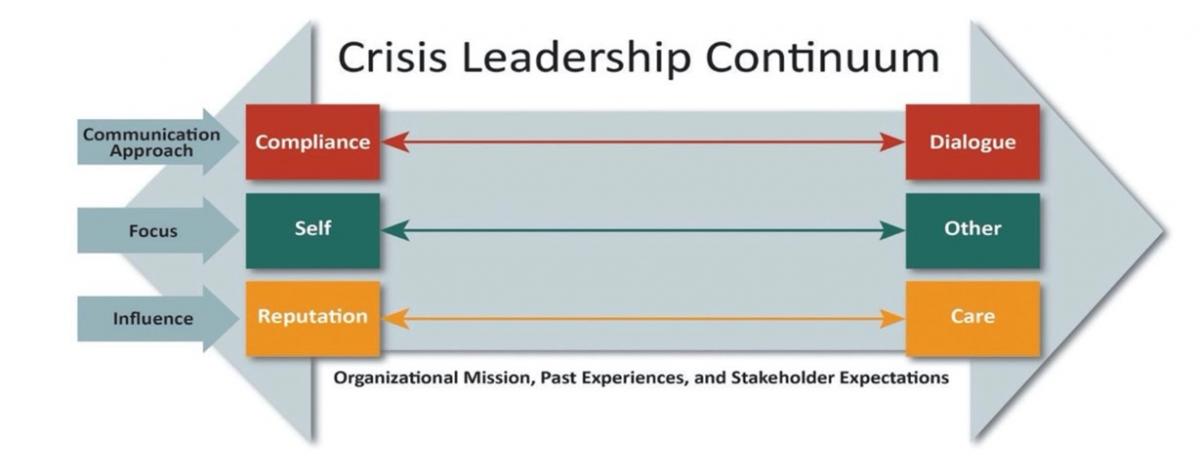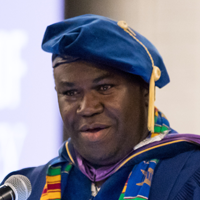
Scene: I was sitting at the head of a ridiculously long table with a large group of worried, sober faces looking back at me. I had just called an emergency meeting of all the department chairs and essential staff in my school: a group of nearly 20 people. The college President had just indicated via an email to the entire campus that because of the unexpectedly rapid spread of COVID-19, we would not be returning to campus after spring break. Instead, we would be moving all of our classes and instruction online. Sticky little question though: How do you move a performing arts, media, and fine arts school with multiple studios, theaters, and rehearsal and exhibition spaces “online?”
What is a college’s correct response to the onslaught of the pandemic? Is it on-campus classes with rigorous testing protocols? Closing the campus for remote-only learning? Some creative hybrid? A quick review of articles in publications such as The Chronicle of Higher Education suggests there are no definitive responses to these questions. In fact, I think it is reasonable to argue that it is still much too early to make definitive statements about solutions or lessons learned. For one thing, the pandemic keeps upending our assumptions and solutions. For another, we are still in medias res, in the middle of things. We can’t see clearly yet. But there are some key questions that are worth considering. For example, as Communication scholars and professionals, what are some of the effective communication strategies for academic leaders when dealing with an event like this, and how do we think differently about what it means to communicate and administrate in an online or flex environment rather than in an environment that features exclusively face-to-face interaction? I want to present three sources for reflection and consideration: 1) A model I have found to be very useful from the crisis communication literature, 2) two high-profile press reports from fall 2020, and 3) my own research and professional experience.
A Model from the Crisis Communication Literature
I have found a model from the crisis communication literature to be very helpful in thinking through leadership communication responses as we navigate this pandemic. In Ralph Gigliotti’s 2019 book, Crisis leadership in higher education: Theory and practice, the author discusses traditional as well as more Communication-oriented approaches to academic leadership during a crisis. Gigliotti argues that among the central issues confronting higher education leaders in a crisis, the values and the history of the organization and the history of leadership behaviors preceding the crisis are all key factors in navigating effective communication responses. Among Gigliotti’s more important insights is the argument that crisis leadership is not just about the event triggering the crisis but is also enmeshed in the ongoing series of interactions with various organizational stakeholders. Gigliotti’s model below shows that higher education leaders tend to gravitate, in their communication, toward a compliance-based approach. That approach foregrounds the institution’s reputation as the most pressing concern for senior administrators. On the opposite end of the model is a more Communication-oriented approach, as Gigliotti frames it. Here, leadership communication is driven by a deep concern for the voice of the various stakeholders in the organization and for communicating a sense of care and concern for their well-being. This approach is more follower-centered and meets the needs of multiple stakeholders. The strength of this model is that it is framed as a continuum, recognizing that the complicated realities facing senior higher education administrators implicates the need for variations of both compliance-based and dialogic approaches in the mix of communication strategies used by the academic leader.

Source: Gigliotti, R. A. (2019). Crisis leadership in higher education: Theory and practice. Rutgers University Press.
This model rightly recognizes the complicated options that face college leaders in the middle of a crisis, options that often are premised on the need to address the concerns of multiple stakeholders who may be at odds with one another. What I think is most useful in this model is its focus on the concern for followers. To that end, the history of leader behavior is going to be an important source of framing for followers in terms of how they understand the messages from their leader. Trust, or a lack thereof, can reinforce communication messages or exacerbate the schisms within a community. In addition, a leader’s ability to convey a sense of care for the well-being of followers during a crisis, in addition to, or instead of, a concern for the image and reputation of the institution, is an important factor.
Two High-Profile Press Reports
Of course, these are broad principles, and reality is often far more complicated. There is rarely a unified community, and college presidents, for example, often must craft different messages to match the strategies appropriate for addressing various stakeholder groups.
There have been some high-profile public examples, though, that suggest that it is possible to deploy communication strategies – or not – in a manner that leads to broad consensus on the outcome and on how a leader and/or leadership team is publicly perceived.
There have been some high-profile public examples, though, that suggest that it is possible to deploy communication strategies – or not – in a manner that leads to broad consensus on the outcome and on how a leader and/or leadership team is publicly perceived. Two starkly different public examples occurred in the fall of 2020. Purdue University President Mitch Daniels was an early and aggressively public advocate for on-campus classes during the fall of 2020. Press reports noted that Daniels’s communication about the need to be on campus was framed within the context of the institution’s duty to students. The media quoted Daniels saying that it would be “a breach of duty” not to try to be on campus. The university made it through the fall semester, but not unscathed. According to press reports, more than 3,000 students contracted COVID (enrollment is close to 46,000) and hundreds more were subjected to quarantine. At the same time, reports also seemed to suggest that Daniels’ gambit was a success, noting that the university did not close prematurely, there seemed to be a meaningful reliance on data by the administration, and whatever the internal realities at the school, Daniels was able to publicly project confidence, competence, and care. From the perspective of communication, Daniels made a bold declaration of his intent at a time of great national uncertainty regarding the right thing to do. He did not reverse course, as some presidents were forced to do, and his communication seemed to be undergirded by rigorous use of data and careful planning. Again, these impressions are based on public reports, not on knowing the complexities of the institution’s inner workings.
On the other hand, the president of one of the smaller SUNY campuses in New York resigned mid-semester after more than 700 students contracted COVID-19 (enrollment is close to 7,000) within a few weeks of the school’s opening. Press reports note that students were neither required to be tested for COVID nor told to self-quarantine. Most important to this conversation, though, are the persistent reports that the administration of that college was repeatedly accused in press reports of being slow to respond to the spread of the virus and of not communicating early or often with the campus community. For example, an online New York Times report dated October 15, 2020, pointed to “a lack of communication” about the college’s plans and about the severity of the outbreak as a source of anger and distrust among the college’s various stakeholders.
There are no clear or easy answers here. Yes, Mitch Daniels reopened the Purdue University campus in the fall, but a recent report in the Chronicle of Higher Education outlined Centers for Disease Control (CDC) data showing that in U.S. counties with large colleges (20,000 students or more) that reopened, COVID cases spiked, and in counties with large colleges that went strictly online, COVID cases declined. The CDC data were limited in that the study only referenced 101 college-hosting counties and was conducted relatively earlier in the fall 2020 semester. The key question: What is a reasonable inference based on the research by scholars such as Gigliotti and the high-profile cases referenced above concerning the importance and the role of higher education leaders’ communication?
My Research and Professional Experience
My own research and professional experience demonstrate the importance of both engaging followers in communication practices and carefully framing key issues as the basis upon which a communication strategy is enacted, especially during crises.
 As a researcher who focuses on leadership and on organizational communication, I understand communication to be an antecedent of organizations. That is, the active processes of interpersonal and group communication become constitutive of the social collectives we refer to as “organizations.” I specifically want to discuss these issues in the context of my own administrative experience. I am the Dean of an arts and media school. By definition, our day-to-day work is deeply enmeshed in face-to-face communication. Our performing arts, fine arts, and media production courses are often intense, interpersonally driven, multifaceted communication experiences. But more than that, the outcomes and the results of our courses are often created for public consumption. The scene with which I opened this article is a real one. In the middle of a regular semester with a packed schedule of music concerts, theater productions, art exhibitions, and film screenings, I was forced to answer the pressing question I posed above: How do you move a performing arts, media, and fine arts school with multiple studios, theaters, and rehearsal and exhibition spaces “online?”
As a researcher who focuses on leadership and on organizational communication, I understand communication to be an antecedent of organizations. That is, the active processes of interpersonal and group communication become constitutive of the social collectives we refer to as “organizations.” I specifically want to discuss these issues in the context of my own administrative experience. I am the Dean of an arts and media school. By definition, our day-to-day work is deeply enmeshed in face-to-face communication. Our performing arts, fine arts, and media production courses are often intense, interpersonally driven, multifaceted communication experiences. But more than that, the outcomes and the results of our courses are often created for public consumption. The scene with which I opened this article is a real one. In the middle of a regular semester with a packed schedule of music concerts, theater productions, art exhibitions, and film screenings, I was forced to answer the pressing question I posed above: How do you move a performing arts, media, and fine arts school with multiple studios, theaters, and rehearsal and exhibition spaces “online?”
Certainly, the most obvious answer would have been to simply cancel everything other than seminars and lecture-based courses. After all, this was an unforeseen event that was out of our control. Seminar and lecture courses were the most amenable to online instruction. Then, the emails began arriving from graduating seniors, anguished that the exhibitions on which they had been working so hard and that were crucial to launching their careers, had vanished, and from faculty who were forced to undo or cancel complicated, time-sensitive projects that they had launched in collaboration with students. Remember, this was all happening in the early days of the pandemic before we fully realized its ruthless efficiency. So, there was still some vague hope that we could do something to rescue the remainder of the semester and the upcoming summer.
That is when I turned to the work of Karl Weick, a prominent management scholar and Professor Emeritus at the University of Michigan Business School. An important part of Weick’s argument is that we rarely make decisions that are rational, linear, or based on following clearly articulated objectives. Instead, as decision makers, we often confront information environments that are rife with ambiguous, incomplete, or contradictory information. However, the complicated nature of these information environments does not absolve us from needing to make firm decisions, the implications of which are often only fully understood retrospectively.
Weick’s conceptualization of the retrospective nature of sensemaking and the frequent need for improvisation in decision making is best captured by Mitch Daniels’ own recounting of a conversation he had with his faculty before the university opened for the fall semester: “If you're worried about the next 13 weeks, join the club. It's a big one.”
What began to settle in for me was an approach to leading that I have since framed as Leadership by Facilitation. I had no clear answers – no one had clear answers as to the best approach in the face of a raging pandemic. Data could guide but could not dictate where to go. And so, I began convening dialogues with varying stakeholders in my school – with staff, students, faculty, and colleagues. These intense, lengthy conversations were frequently driven by open-ended questions. The sessions were facilitated via Zoom. I listened actively and intensely and took lots of notes. The sizes of the groups ranged from dyads to groups of 15 or more. As a facilitator, I was not an impartial guide but, rather, a multi-partial one. I saw my role as seeking to arrive at what the Quakers call “a sense of the meeting” as a precursor to acting.
This is not easy to do as a Dean for all the obvious reasons – built into my job is a certain remove from the daily life of the faculty and staff. The nature of my position makes it more likely that people will tell me what I want to hear rather than what they feel is true. I acknowledge all of this. And yet…
Looking back, I realize that using facilitation as a leadership approach during the early days of this crisis reflected, as per Gigliotti’s model, the leader behavior I had tried to consistently exhibit in my school over the previous three years. I began by working to meet individually with each member of the school’s staff and faculty. I tried to balance my busy schedule with an open-door policy, and I worked hard to have frequent and meaningful one-on-one conversations with a wide variety of faculty, staff, and students in my school. These conversations would take place in my office or as I wandered around the building where my office and the office of many of the faculty and staff are located. I worked hard to build trust.
There were some important tensions I had to navigate in this approach to leading. While I have stressed an organic approach in referencing facilitation, COVID-19 represented an emergency that required being goal-directed and decisive; while gaining a sense of the group was important, I had to be mindful of influential individuals who could disrupt or derail any sense of group cohesion; while I had to be concerned about the decisions I had to make about budgets, facilities, and technology, I also had to balance these decisions with the pervasive and possibly (dis)integrative role of (the) culture in the school.
To help navigate these tensions, I again drew on the work of Karl Weick. Weick’s concept of Extracted Cues was particularly helpful. Weick’s notion is that crises (labeled “extracted cues”) provide touchstone moments for leaders to initiate and influence sense-making in their organizations; indeed, Weick intimates that crisis represents the quintessential opportunity to reduce equivocality—reduce the legitimacy of competing narratives in favor of one sense-making narrative that would be the touchstone. Weick’s reflections on the merits of Plausibility vs Accuracy reinforced for me the importance of the leader’s ability to tell a good story – to create an effective narrative that frames the dilemma facing the organization and all potential solutions.
Framing enables the leader to help the organization choose the narrative from among several, competing narratives.
The key here is that the story need not be 100 percent accurate. It simply must be plausible. Weick argues that when people face the inexplicable, they treat any explanation as better than nothing. The initial story may be a stretch, but it makes sense of the senseless. Weick argues that swift plausibility is better than slow accuracy because, in the face of the inexplicable, we need “an” explanation not “the” explanation. The leader’s role as storyteller and key sense-maker is crucial in a time of crisis. Gail Fairhurst, a foremost leadership Communication scholar, conceptualizes the leader’s communication as “Framing.” Framing enables the leader to help the organization choose the narrative from among several, competing narratives.
At my school, our collective sense-making story became a focus on our loss of an audience. Many of the concerns I heard centered on the problem of losing an audience for our collective work. In a series of intense conversations, beginning with a meeting titled “The Dean’s Crazy Idea,” I posed the question, Well, what if we move where the audience is located? That question guided our thinking about reconnecting with our audience. Using the streaming service Netflix as an exemplar, we moved toward the idea of creating content specifically designed and produced for a digital platform, as opposed to creating content for a live audience which was then archived on a digital platform. This approach significantly impacted the work of teaching and creating in our school. The platform, which we titled ARTSCOMM DIGITAL, was the result of this dialogically driven, inquiry-based approach to leadership in the midst of the COVID crisis.
What I did builds on Gigliotti’s model and incorporates Weick’s advice. However, rather than developing the narrative for the group by myself, I used a facilitative approach with the collective to create and narrate back to the group the first initial plausible story of the importance of relocating the audience. In doing so, I opted for an approach to leadership communication that includes the following characteristics:
LEADERSHIP AS FACILITATION:
- Process-oriented
- Relationally driven
- Trust-based
- Inquiry-driven
- Questions as essential managerial tools
We are only beginning to understand how the pandemic has influenced how we work, lead, and communicate. Collective sense-making will help us create a coherent narrative that can serve as a recipe for action for many crises to come.
ABOUT THE AUTHOR

MAURICE L. HALL is Dean and Professor of Communication at the School of the Arts and Communication at The College of New Jersey. Hall’s research focuses on Leadership Communication as well as on the mediated, social, performative, creative, and institutional aspects of Communication, emphasizing the organizing properties of Communication. Hall is on the editorial board of Management Communication Quarterly, and is co-editor of the book Re-Constructing Place and Space: Media, Power, and Identity in the Constitution of a Caribbean Diaspora, which won a Best Book Award in 2012, and co-author of the 2004 book, Embodying the Postcolonial Life.

